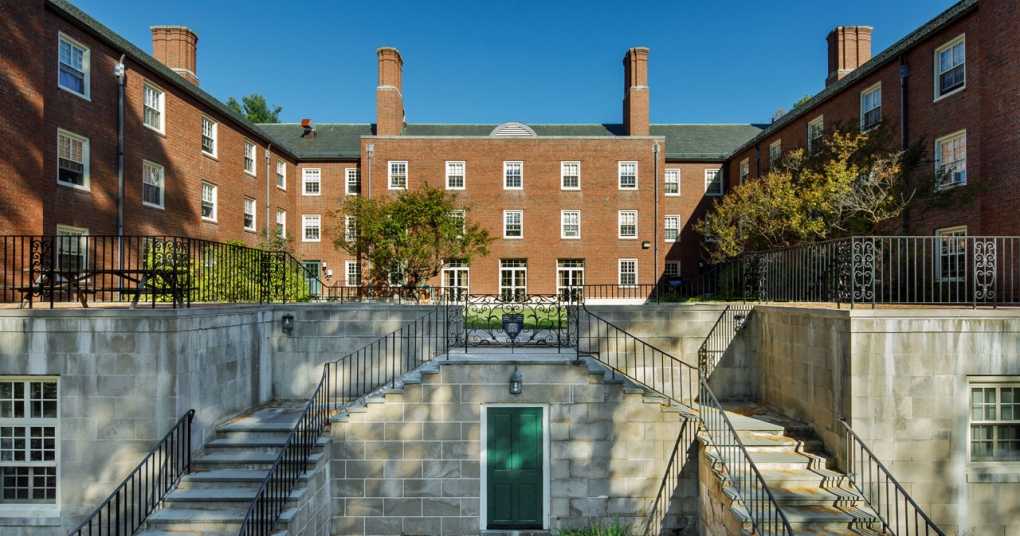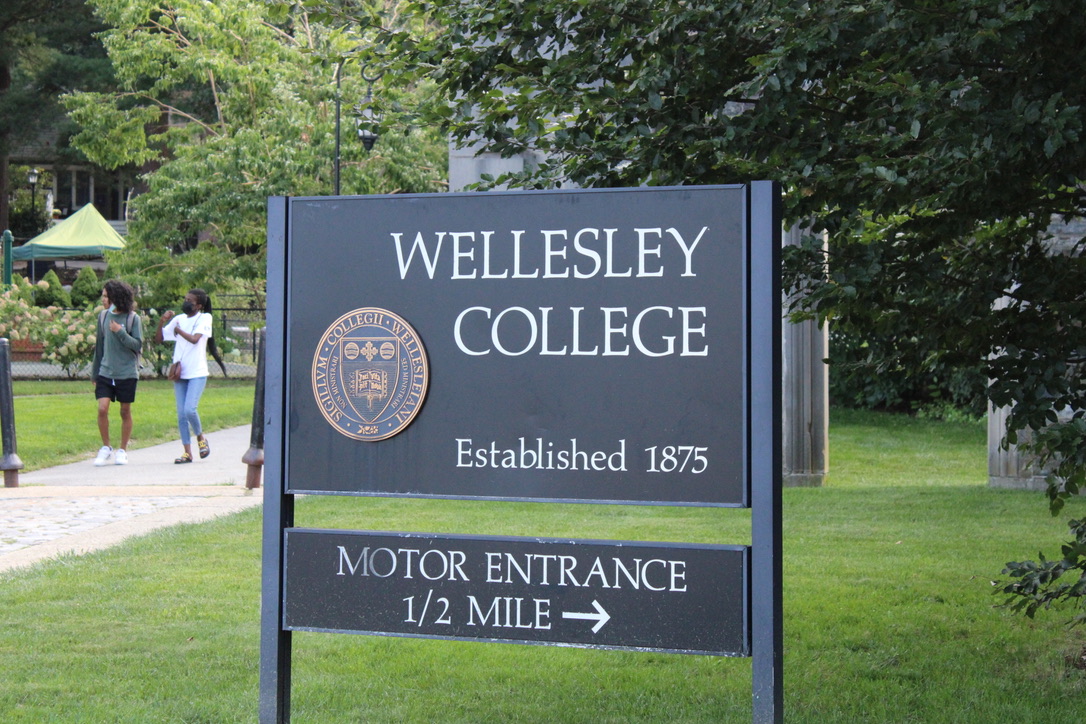This article is a follow-up to an article which appeared in the Sept. 18, 2019 edition of The Wellesley News entitled “Dozens of Students Displaced Due to On-Campus Housing Issues.”
Days before the fall semester started, 20 students found themselves without housing. Although these students now have permanent housing, their stories, along with the administration’s controversial response, have galvanized student activism on campus this fall.
When the Wellesley News first spoke to Lauren Dines ’20, she had been left unhoused because of an error with the StarRez housing portal and was living in what she described as an “old study space next to the rec room and vending machines” in Claflin’s basement. It has since become her permanent room. “More my choice than theirs,” said Dines. “I was concerned that if I opted to only temporarily live here I would not be found a new space quickly.”
An anonymous member of the Class of 2021, who had been left unhoused because of human error within the Office of Residential Life (ORL), is now also permanently housed. The student told The Wellesley News that she had been contacted mid-September and offered the original room she had wanted, a room in a language corridor, which she was “very happy about.” Helen Wang, director of Residential Life and Housing, said in an Oct. 3 statement to The Wellesley News that “all displaced students have permanent housing. We are really excited about that!”
Now that the displaced students are all housed, tensions between student activists and the administration no longer center on them, but rather on a broader range of issues with housing. As the Student Coalition at Wellesley College (SCWC) explained in a recent all-school email, the “housing shortage at the beginning of the year spurred many students and alumnae to examine their own experiences [at] Wellesley and the ways that the College can do better on many fronts, including housing.”
On Sept. 23, the SCWC sent an open letter to President Paula A. Johnson and other members of senior administration. This letter, which was published in the Sept. 25 edition of the Wellesley News, included a condemnation of the language used by President Johnson in official correspondence with alumnae regarding the housing situation. In particular, the SCWC took umbrage with President Johnson’s use of the words “misleading,” “incorrect” and “disparaging,” which they said were the administration’s way of suggesting intentional deceit on the part of the student body.
SCWC member Tatiana Ivy Moise ’21 spoke to this general feeling of distrust between the student body and the administration, saying “a lot of students feel that administrative figures often put the best interests of the capital ‘W,’ capital ‘C’ Wellesley College brand ahead of the interests of the students. The best interests of the College are not always the best interests of the students.”
SCWC’s open letter also invited members of the senior administration to hear testimonies on a variety of issues at an urgent town hall meeting on Sept. 25. As the Wellesley News reported in its Oct. 1 issue, senior administration refused to go to the meeting, citing concerns with the event being livestreamed by Wellesley College TV (WCTV). The administration’s choice to not go to the meeting left many students feeling frustrated and angry, with one anonymous member of the Class of 2022 noting that, “There was a lot of important, emotionally devastating testimony given tonight. All the administration had to do was listen to us, but they couldn’t even do that.”
On Sept. 26, the day after the town hall, Moise and two other SCWC members, Tyler Vargas ’21 and Katie Christoph ’21, discussed housing with members of senior administration including President Johnson, Dean Horton and Provost Andrew Shennan. The SCWC later disseminated detailed minutes of this meeting in an online forum. These minutes were recorded by a member of the SCWC and could not be independently verified by The Wellesley News. Members of senior administration were also unable to confirm the accuracy of these minutes.
According to these minutes, Provost Shennan said that dorm renovation is too large a project for philanthropy alone, meaning the College is relying on its operating budget to do renovations. Shennan added that “it may be difficult to ask donors to fund renovations of buildings that already exist because [donors] can’t put their names on them.” The senior leadership also reiterated the urgency of the Science Center renovations, and when it was suggested that dorm renovations are more urgent than the Science Center renovations, President Johnson is quoted as saying “it is not worth our while to have a conversation along the lines of ‘why did you renovate x and not y, or x instead of y.’” The Wellesley News reached out to both President Johnson and Dean Horton for comment, but has not received a response at this time. Christoph said of the meeting with senior administration in a statement to the Wellesley News, “We feel that our meeting was a great first step in a very long journey that is nowhere near finished, but we’re glad that it’s getting started.”
In this meeting, senior administration reportedly also indicated that the College has moved away from former President Kimberly Bottomly’s Wellesley 2025 plan, which included, according to an official summary, “an 11,900-square foot addition for an expanded and improved dining facility [in Munger]; full renovation of Beebe, including updated underground infrastructure that serves all residence halls in Hazard Quad; and a full renovation of Cazenove, with the exception of the link to Pomeroy.” The Wellesley 2025 plan also would have included “a complete renewal of Tower Court East and West, including renovation of the Tower Court dining hall.” Although parts of the Wellesley 2025 plan were completed or are underway, the planned major renovations to Hazard Quad and Tower Court are conspicuously absent from the College’s new 5-year plan, as are any renovations to actual dorm rooms beyond painting. The new 5-year plan does, however, include renovations to East Side dorms, which were left out of Wellesley 2025 entirely.
According to a fact sheet sent out on Sept. 18 by President Johnson, the College is now primarily doing minor repairs. Only Pomeroy will receive “miscellaneous critical repairs,” with Munger, a priority in the Wellesley 2025 plan, only receiving new kitchenettes. Other housing projects being undertaken by the College include “right-sizing” dorm rooms, wherein dorm rooms are measured and given the proper size furniture” re-painting, mold removal, pest control and asbestos removal. Moise responded to the new 5-year plan by saying “renovating common spaces before the dire needs of student rooms is not necessarily what students want and need right now.”
Many students besides Moise have expressed frustration with the current administration’s response. On the night of Oct. 6, Breanna Olson ’21 placed an art installation protesting the housing crisis in the Academic Quad.
“I made this tent entirely out of window shades that were installed in the new Pendleton West building during construction but were replaced and thrown away because they were the ‘wrong color,’” said Olson in an email to the Wellesley News. “In light of current events, I decided to resurrect the tent and place it in the Academic Quad with a sign that reads ‘New Student Housing.’ As an act of protest regarding housing on campus, it serves as a symbol of the frivolous spending at Wellesley on academic buildings while student housing goes entirely neglected.”
Within twelve hours of its installation, the tent was taken down by campus police, an act which Olson calls censorship. “Not only was it taken down, but it was also destroyed and left no hope of putting it back up,” she said. “At this point, not only have they silenced my voice but they have destroyed my artwork, my medium of choice.” The fact that Oct. 6 was the beginning of “Discover Wellesley Weekend,” a time when prospective students visit campus, may also have contributed to the removal of the tent.
The College attributes these actions to the installation’s lack of proper authorization. “There was no communication with the College to request or obtain approval for this structure, so the College treated it as it would any other unauthorized structure on campus and removed it,” the media team’s statement said.
An anonymous member of the Class of 2020 shared Olson’s frustrations. “I feel like the administration doesn’t want to acknowledge the current state of the dorms because they care more about their image than they do students,” they said. “Doing major renovations on the dorms would be, in a way, them owning the fact that they let the dorms fall into their current state. We had a plan [Wellesley 2025] and it was a good one, so I’m not sure why the College scrapped it. The housing shortage earlier this year was just the tip of the iceberg.”







